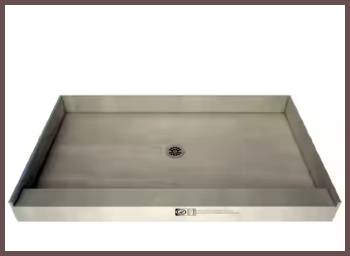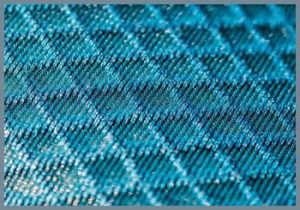The decision to renovate or install a new shower can be both exciting and daunting. With a plethora of options available in the market, choosing the perfect shower pan can turn into an overwhelming task. Among the popular choices, Kbrs and Tile Redi are the two brands that dominate the conversation.
In this article, we will delve into an analytical comparison between Kbrs and Tile Redi shower pans, evaluating their pros and cons, to help you make an informed decision for your bathroom upgrade.
A Brief Comparison Table
| Feature | Kbrs | Tile Redi |
| Customization | Offers various sizes, shapes, and drain locations | Wide range of sizes, shapes, and drain locations available |
| Material | High-density expanded polystyrene (EPS) | One-piece polyurethane foam |
| Installation | Easy, suitable for DIY enthusiasts | Complex, professional installation recommended |
| Waterproofing | Factory-installed waterproof membrane | Patented leak-proof technology |
| Pre-sloped | Yes | Yes |
| Ready-to-Tile | No | Yes |
| Compatibility | Works best with proprietary tile basins | Compatible with various tile options |
| Warranty | Varies depending on the product | Comprehensive warranty available |
| Price | Can be expensive, especially for customized solutions | Generally more expensive than other shower pan alternatives |
| Availability | May require online ordering, not easily available in stores | Widely available both online and in stores |
| Mortar Bed Requirement | No | Yes |
Kbrs: Pros and Cons

Pros
- Customization
Kbrs shower pans are available in various sizes, shapes, and drain locations. They even offer the option of customizing your shower pan to match your specific requirements.
- Durable Material
Kbrs shower pans are made of high-density expanded polystyrene (EPS), making them sturdy and long-lasting.
- Easy Installation
The Kbrs installation process is relatively straightforward, and with proper guidance, can be accomplished by DIY enthusiasts.
- Waterproofing
Kbrs shower pans come with a factory-installed waterproof membrane, eliminating the need for additional waterproofing efforts.
- Slope
Kbrs shower pans are pre-sloped, ensuring proper drainage and reducing the chances of water pooling.
Read More: About Comparison Between Zia Tile And Cle Tile
Cons
- Price
Kbrs shower pans can be on the expensive side, especially if you opt for a customized solution.
- Availability
Kbrs products may not be easily available at local stores and might require online ordering.
- Compatibility
Kbrs shower pans are specifically designed to work with their proprietary tile basins, which may limit your tile options.
Tile Redi: Pros and Cons

Pros
- Ready-to-Tile
Tile Redi shower pans are designed to be ready for tiling immediately after installation, making the process efficient.
- One-Piece Design
Tile Redi shower pans come in a one-piece design, reducing the chances of leakage.
- Leak-Proof
Tile Redi shower pans feature a patented leak-proof technology, providing additional peace of mind.
- Variety
Tile Redi offers a wide range of sizes, shapes, and drain locations to suit your specific needs.
- Warranty
Tile Redi shower pans come with a comprehensive warranty, which can be a significant advantage in case of any issues.
Cons
- Installation Complexity
Tile Redi shower pans can be challenging to install, particularly for DIY enthusiasts. Professional installation is often recommended.
- Cost
Tile Redi products are generally more expensive than other shower pan alternatives.
- Mortar Bed
Tile Redi shower pans require a mortar bed for installation, adding to the complexity and cost of the process.
Read More: About LiLi Cement Tiles
Frequently Asked Questions (FAQs)
The best shower pan material depends on your preferences, budget, and specific requirements. Some popular materials include acrylic, fiberglass, and high-density expanded polystyrene (EPS) used by Kbrs.
Tiling a Kbrs shower pan is a straightforward process. First, apply a layer of thin-set mortar over the shower pan surface. Then, lay the tiles, starting from the center and working your way outwards, ensuring proper alignment and spacing. Finally, grout the tiles and seal the edges.
A shower pan and a shower base are often used interchangeably. However, a shower pan refers to the sloped, waterproof layer beneath the shower floor that directs water to the drain, while a shower base is the finished, visible surface upon which you stand during a shower.
Shower pans are typically constructed from materials such as fiberglass, acrylic, or high-density expanded polystyrene, while shower bases can be made from various materials, including tiles, stones, or even prefabricated acrylic or fiberglass units.
When choosing a shower pan tile, consider the following factors:
Slip resistance: Opt for slip-resistant tiles with a textured surface to ensure safety.
Size: Smaller tiles provide better traction due to more grout lines, but larger tiles create a sleek and modern look.
Material: Choose a material that is durable, water-resistant, and easy to maintain, such as porcelain, ceramic, or natural stone.
Style and color: Consider the overall design and color scheme of your bathroom to select tiles that complement your space.
Tile stickers are a cost-effective and easy way to update your bathroom’s appearance without the hassle of replacing tiles. To use tile stickers:
Clean the surface of the tile, ensuring it is free of dust, dirt, and grease.
Peel the backing off the tile sticker.
Position the sticker on the tile, aligning it carefully to avoid air bubbles or creases.
Press the sticker firmly onto the tile, smoothing it out with a cloth or squeegee.
Trim any excess material around the edges using a sharp utility knife.
Tile strips, also known as tile trims or tile edging, are used to create clean, finished edges and protect the tile from chipping or cracking. To use tile strips:
Measure the area where the tile strip will be installed.
Cut the tile strip to the appropriate length using a hacksaw or a specialized tile trim cutter.
Apply adhesive or thin-set mortar to the back of the tile strip, or directly onto the surface where it will be placed.
Press the tile strip firmly into place, ensuring it is level and properly aligned with adjacent tiles.
Install tiles around the tile strip, ensuring they are flush with the strip’s edge.
Once the adhesive or mortar has dried, apply grout to fill any gaps between the tiles and the tile strip.
Wrapping Things Up
In conclusion, both Kbrs and Tile Redi shower pans offer unique advantages and disadvantages. Kbrs excels in customization, durability, and ease of installation, while Tile Redi boasts ready-to-tile designs, leak-proof technology, and a comprehensive warranty. Ultimately, the choice between Kbrs and Tile Redi will depend on your specific needs, preferences, and budget. By carefully considering the pros and cons of each brand, you can select the perfect shower pan solution for your bathroom renovation.



